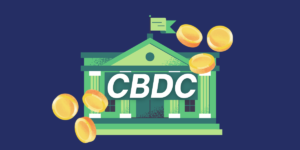Alternative coins, commonly known as altcoins, are any cryptocurrencies other than Bitcoin. Since Bitcoin is highly regarded as the first of its kind, any new cryptocurrency developed after is considered an alternative coin.
Since the inception of Bitcoin, there have been more than 9,000 altcoins created, and they represent more than 57% of the total cryptocurrency market cap.
Altcoins were created to improve and expand on aspects of Bitcoin, not only as a digital currency but also to facilitate other applications of blockchain technology, such as decentralised finance.
Namecoin, the first altcoin, was released in April 2011. Based on Bitcoin’s code, Namecoin was integral to the history and creation of altcoins. This new token showcased that there was more than enough space in the market for more than one kind of coin.
Similarly to Bitcoin, altcoins are created through a process of mining, otherwise known as a proof-of-work mechanism. Examples of this include Litecoin (LTC), Dogecoin (DOGE) and Bitcoin Cash (BCH).

Altcoins like Ether (ETH), Cardano (ADA) and Solana (SOL) were created with a focus on facilitating smart contracts that allow decentralised applications (dApps) to be created on their platforms. These coins offer a lot of utility and opportunities for innovative technology and have rapidly risen in popularity and market share over the last couple of years.
Altcoins are being developed to be even faster, more decentralised, scalable, and secure.
Discover more about the applications of some of these coins in areas such as DeFi and P2P Trading, or read more about Ethereum and ERC-20 tokens.
Types of Altcoins
While hard to categorise the ecosystems of altcoins, they can be broken down into the following categories: mining-based tokens, stablecoins, security tokens and utility tokens.
Mining-based tokens
Simply put, mining-based altcoins are created through the process of mining, just like Bitcoin. This process is used to add more coins to the supply and verify transactions.
Miners use a variety of devices to solve mathematical equations; the first to solve the equation can verify a block of transactions. In return for this, the miners who verify these blocks will receive crypto rewards.
Mining is the traditional method to process crypto transactions, as it was utilised by the first cryptocurrency, Bitcoin.
One well-known disadvantage to this type of altcoin is that it requires significant energy and is not very sustainable.
Stablecoins
Stablecoins are a type of altcoin that have their value pegged to an external reference, such as USD or gold price. This type of altcoin offers a great solution to the high volatility of cryptocurrency, by providing a price-stable asset (like fiat currencies) whilst maintaining the mobility and utility of a crypto asset. This is key in bridging the gap between fiat and cryptocurrency, by providing a way for market stability.
Most stablecoins achieve price stability through collateral, which can be done through several methods. Some of the biggest stablecoins, such as Tether (USDT), USD Coin (USDC) and Binance USD (BUSD), are all backed by fiat currency. There are also stablecoins like Tether Gold (XAUT) and Paxos Gold (PAXG) backed by physical assets like Gold as collateral.
Stablecoins such as DAI (MakerDAO) are backed by another cryptocurrency as collateral, which employs smart contracts to facilitate this. There are also stablecoins such as TerraUSD (UST) which use algorithms to stabilise their price by manipulating the supply of tokens in circulation.
Security tokens
Security tokens, sometimes referred to as digital tokens or liquid assets, are essentially digital or liquid contracts for fractions of an asset that already has value. Think of real estate, stakes in a company or a car.
Just like owning stock in a company, when they win, you win. Security tokens entitle holders to a share of profits in the asset.
Security tokens are the natural connector between the finance and blockchain sectors. It is said that security tokens could potentially overtake traditional financial markets, as the new hybrid blockchain models become more apparent.
Although security tokens are much less common, this type of token is on the rise.
Utility tokens
On the reverse side, utility tokens are digital tokens that have been built on a specific blockchain ecosystem that grants token holders particular rights, often based on Ethereum’s ERC-20 Standard.
A game developer, for example, could issue utility tokens for their next release. Token holders could then spend this on gaming accessories or to purchase in-game items.
Unlike Bitcoin, utility tokens such as Ethereum offer direct utility in a variety of areas, boosting their longevity.
Pros and Cons
Pros
- Altcoins tend to improve on Bitcoin’s flaws. They’re generally faster, have lower mining costs, and use less energy.
- Altcoins provide competition; whether that is against Bitcoin or other altcoins.
- There’s generally a lower fee charged for each transaction.
Cons
- The value of altcoins is volatile.
- There’s generally a higher risk of scams and fraud involved with altcoins.
While altcoins refer to any cryptocurrency that isn’t Bitcoin, the alt genre has evolved into much more. Over half of the crypto market’s value is floating around in altcoins and is continually growing in size.
Whether you’re looking for an altcoin associated with the gaming industry, or interested in investing in one that has a core focus is climate action, there’s typically one (or more) tokens out there for everyone.





